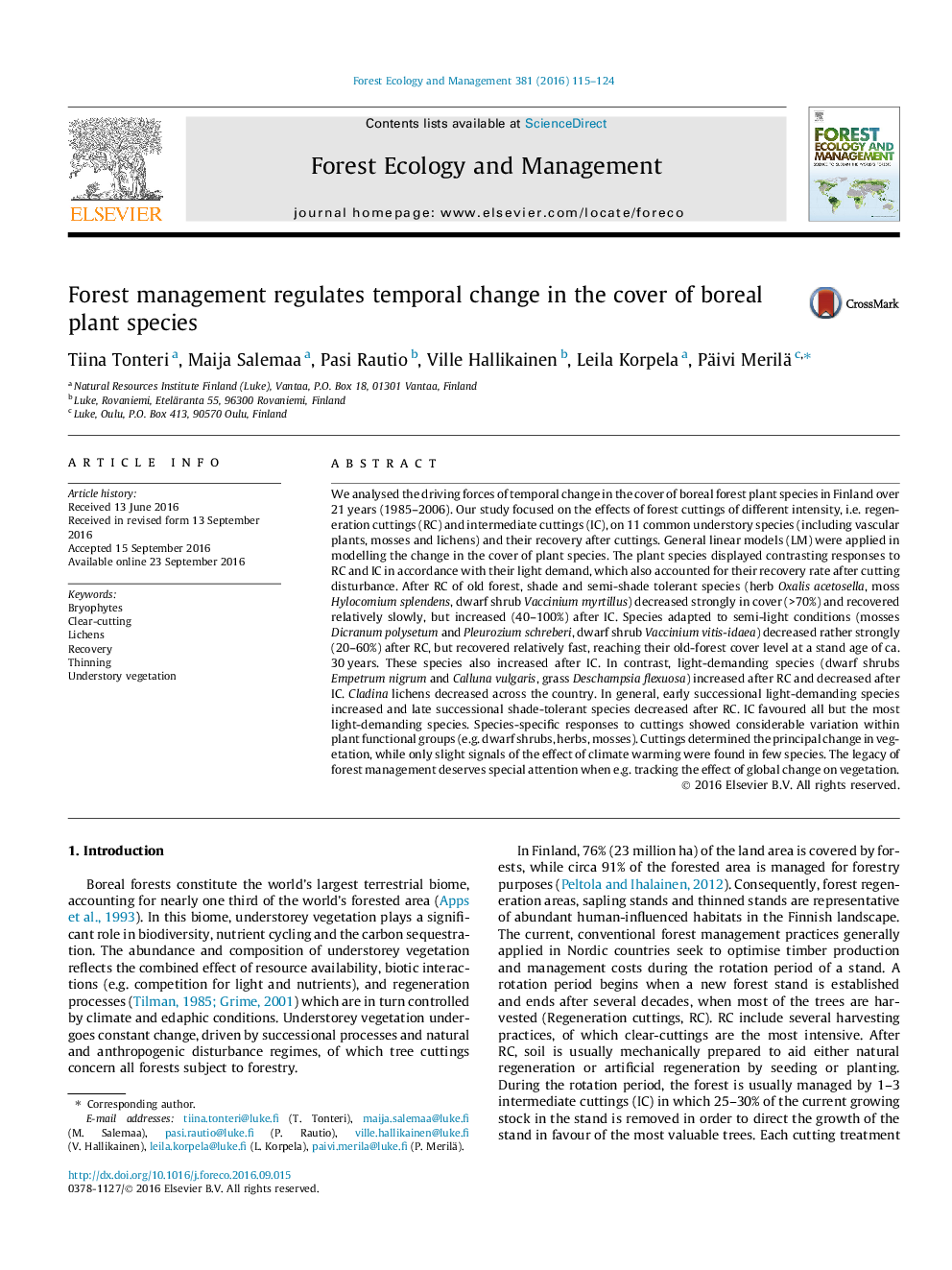| کد مقاله | کد نشریه | سال انتشار | مقاله انگلیسی | نسخه تمام متن |
|---|---|---|---|---|
| 6459550 | 1421377 | 2016 | 10 صفحه PDF | دانلود رایگان |
- Study on change in the cover % of boreal forest understorey in Finland in 1985-2006.
- Species-specific responses to cuttings differed within plant functional groups.
- Light requirements directed the response of understorey plants to cuttings.
- The plant species showed contrasting responses to clear-cuttings and thinnings.
- Light requirements also accounted for the recovery rate after cutting disturbance.
We analysed the driving forces of temporal change in the cover of boreal forest plant species in Finland over 21Â years (1985-2006). Our study focused on the effects of forest cuttings of different intensity, i.e. regeneration cuttings (RC) and intermediate cuttings (IC), on 11 common understory species (including vascular plants, mosses and lichens) and their recovery after cuttings. General linear models (LM) were applied in modelling the change in the cover of plant species. The plant species displayed contrasting responses to RC and IC in accordance with their light demand, which also accounted for their recovery rate after cutting disturbance. After RC of old forest, shade and semi-shade tolerant species (herb Oxalis acetosella, moss Hylocomium splendens, dwarf shrub Vaccinium myrtillus) decreased strongly in cover (>70%) and recovered relatively slowly, but increased (40-100%) after IC. Species adapted to semi-light conditions (mosses Dicranum polysetum and Pleurozium schreberi, dwarf shrub Vaccinium vitis-idaea) decreased rather strongly (20-60%) after RC, but recovered relatively fast, reaching their old-forest cover level at a stand age of ca. 30Â years. These species also increased after IC. In contrast, light-demanding species (dwarf shrubs Empetrum nigrum and Calluna vulgaris, grass Deschampsia flexuosa) increased after RC and decreased after IC. Cladina lichens decreased across the country. In general, early successional light-demanding species increased and late successional shade-tolerant species decreased after RC. IC favoured all but the most light-demanding species. Species-specific responses to cuttings showed considerable variation within plant functional groups (e.g. dwarf shrubs, herbs, mosses). Cuttings determined the principal change in vegetation, while only slight signals of the effect of climate warming were found in few species. The legacy of forest management deserves special attention when e.g. tracking the effect of global change on vegetation.
Journal: Forest Ecology and Management - Volume 381, 1 December 2016, Pages 115-124
